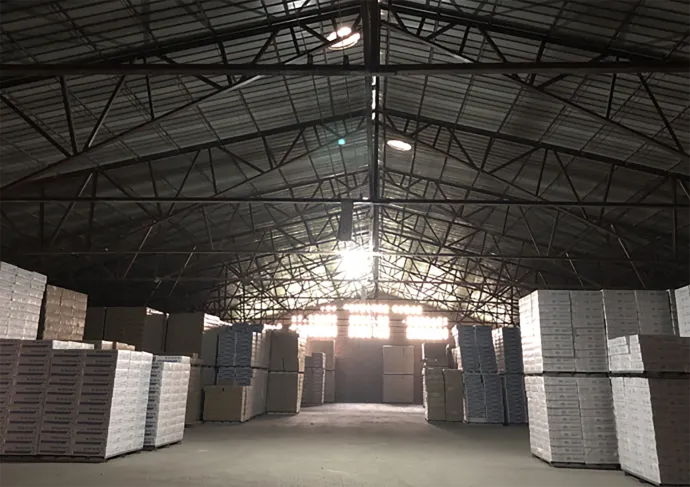- Afrikaans
- Albanian
- Amharic
- Arabic
- Armenian
- Azerbaijani
- Basque
- Belarusian
- Bengali
- Bosnian
- Bulgarian
- Catalan
- Cebuano
- Corsican
- Croatian
- Czech
- Danish
- Dutch
- English
- Esperanto
- Estonian
- French
- German
- Greek
- Hindi
- Indonesian
- irish
- Italian
- Japanese
- Korean
- Lao
- Malay
- Myanmar
- Norwegian
- Norwegian
- Polish
- Portuguese
- Romanian
- Russian
- Serbian
- Spanish
- Swedish
- Thai
- Turkish
- Ukrainian
- Uzbek
- Vietnamese
नवम्बर . 15, 2024 20:15 Back to list
t grid ceiling
Exploring the T-Grid Ceiling Innovation in Ceiling Design
Ceilings have traditionally played a passive role in architecture and interior design, often overlooked in favor of walls and furnishings. However, the introduction of the T-grid ceiling has transformed the way we perceive and utilize ceiling spaces. This innovative approach not only enhances the aesthetic appeal of a room but also improves functionality and adaptability in a variety of settings.
Understanding T-Grid Ceilings
A T-grid ceiling, also known as a suspended ceiling or drop ceiling, is constructed using a framework made from an interconnected grid of metal or other durable materials that resembles the letter T. These grids support lightweight ceiling tiles, which can be made from a variety of materials including mineral fiber, fiberglass, and even metal. The T-grid design allows for easy access to the space above the ceiling, making it ideal for systems like HVAC, electrical, and plumbing, which may require maintenance or adjustments over time.
Aesthetic Versatility
One of the primary advantages of T-grid ceilings is their aesthetic versatility. They offer a seamless finish that can be customized to fit various styles, from modern and minimalist to classic and ornate. The ceiling tiles come in a range of colors, textures, and patterns, allowing designers to create unique visual experiences within any space. Whether in commercial buildings, offices, schools, or residential properties, T-grid ceilings can enhance the ambiance and complement the overall design scheme.
Acoustic Benefits
In addition to their aesthetic advantages, T-grid ceilings provide significant acoustic benefits. The materials used in the ceiling tiles can absorb sound, reducing noise levels and creating a more pleasant environment. This feature is particularly important in settings like offices, where productivity can be hampered by excessive noise. By incorporating sound-dampening tiles into a T-grid ceiling, designers can create quieter, more focused spaces conducive to work and collaboration.
t grid ceiling

Energy Efficiency
T-grid ceilings can also contribute to energy efficiency in buildings. By incorporating insulation and energy-efficient lighting, these ceilings help regulate temperature and reduce energy consumption. Additionally, the ability to install recessed lighting within the grid allows for efficient use of artificial light, further contributing to energy savings. This adaptability means T-grid ceilings can support sustainable design practices, aligning with the growing emphasis on eco-friendly building solutions.
Easy Installation and Maintenance
The installation of T-grid ceilings is relatively straightforward, often requiring less time and labor compared to traditional ceiling methods. Their modular nature allows for the quick replacement of individual tiles, minimizing disruptions during maintenance or renovations. This ease of installation and maintenance makes T-grid ceilings an attractive option for facilities managers and property owners alike.
Applications Across Industries
The versatility of T-grid ceilings means they are suitable for a wide range of applications. In commercial contexts, they are commonly used in offices, retail spaces, and healthcare facilities. In educational environments, T-grid ceilings are an excellent choice for classrooms and auditoriums due to their acoustic properties. Even in residential designs, these ceilings can add a contemporary touch while providing practical solutions for lighting and sound management.
Conclusion
The T-grid ceiling is a prime example of how innovation can transform a traditionally overlooked aspect of interior design into a functional and aesthetic focal point. Whether enhancing the ambiance of a corporate office, improving acoustics in a classroom, or promoting energy efficiency in residential settings, T-grid ceilings offer endless possibilities. As we continue to seek out versatile and sustainable design solutions, the T-grid ceiling stands out as an essential component of modern architecture. Its blend of form and function not only illustrates the evolution of ceiling design but also paves the way for future innovations in the field. As trends evolve, one thing is clear the T-grid ceiling is here to stay, shaping the way we interact with our spaces.
-
Transform Interiors with PVC Gypsum Ceiling: A Stylish, Durable, and Moisture-Resistant SolutionNewsMay.19,2025
-
The Smart Interior Upgrade: Discover the Durability and Versatility of Gypsum Ceiling Access Panel SolutionsNewsMay.19,2025
-
The Smart Choice for Interior Design: Discover the Value of PVC Gypsum Ceiling SolutionsNewsMay.19,2025
-
Mineral Fiber Ceiling Tiles: The Smart Blend of Performance and AestheticsNewsMay.19,2025
-
Mineral Fiber Ceiling Tiles: The Superior Choice Over Gypsum for Sound and Fire SafetyNewsMay.19,2025
-
Mineral Fiber Ceiling Tiles: Eco-Friendly Strength and Style for Every CeilingNewsMay.19,2025







